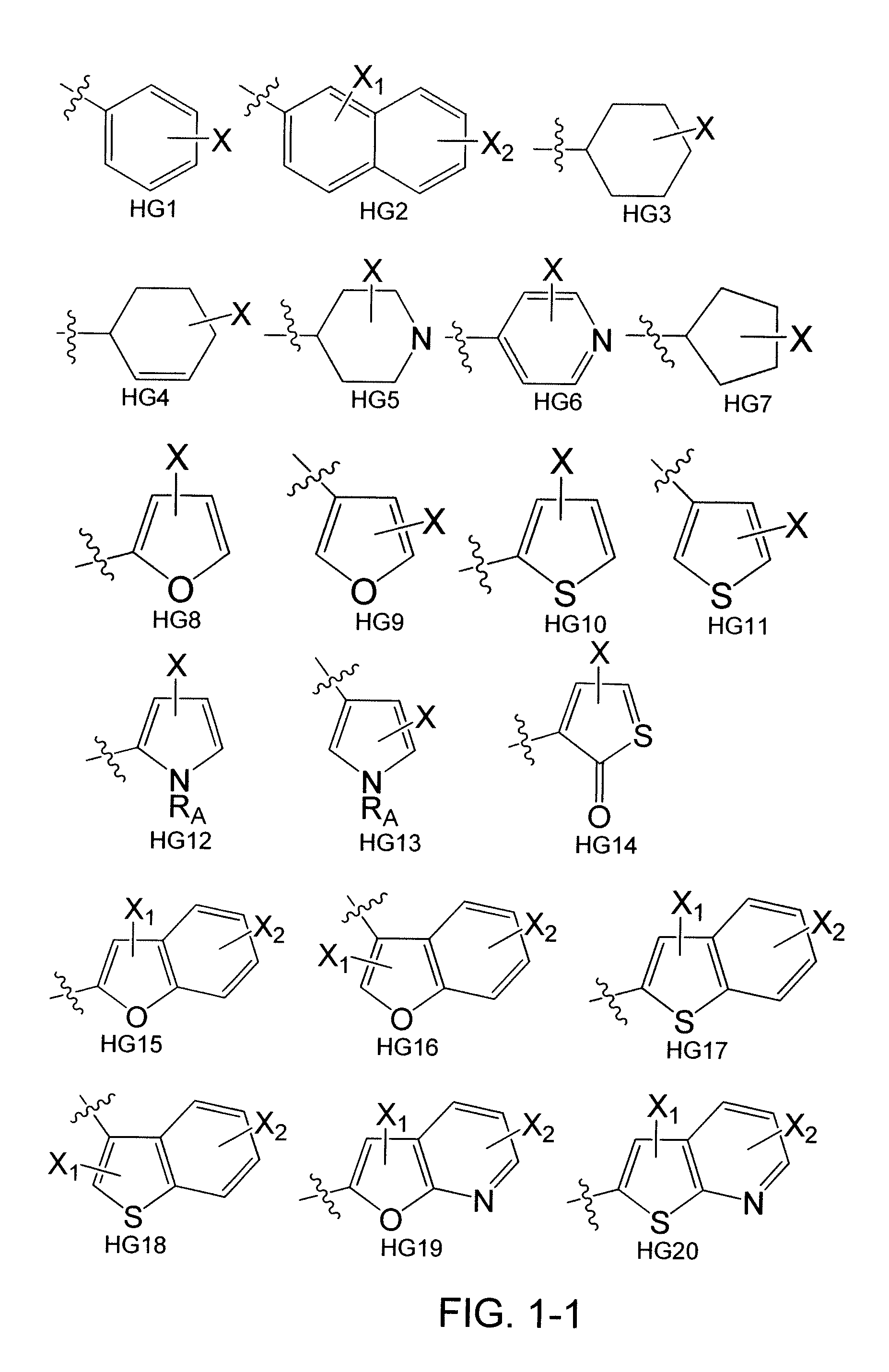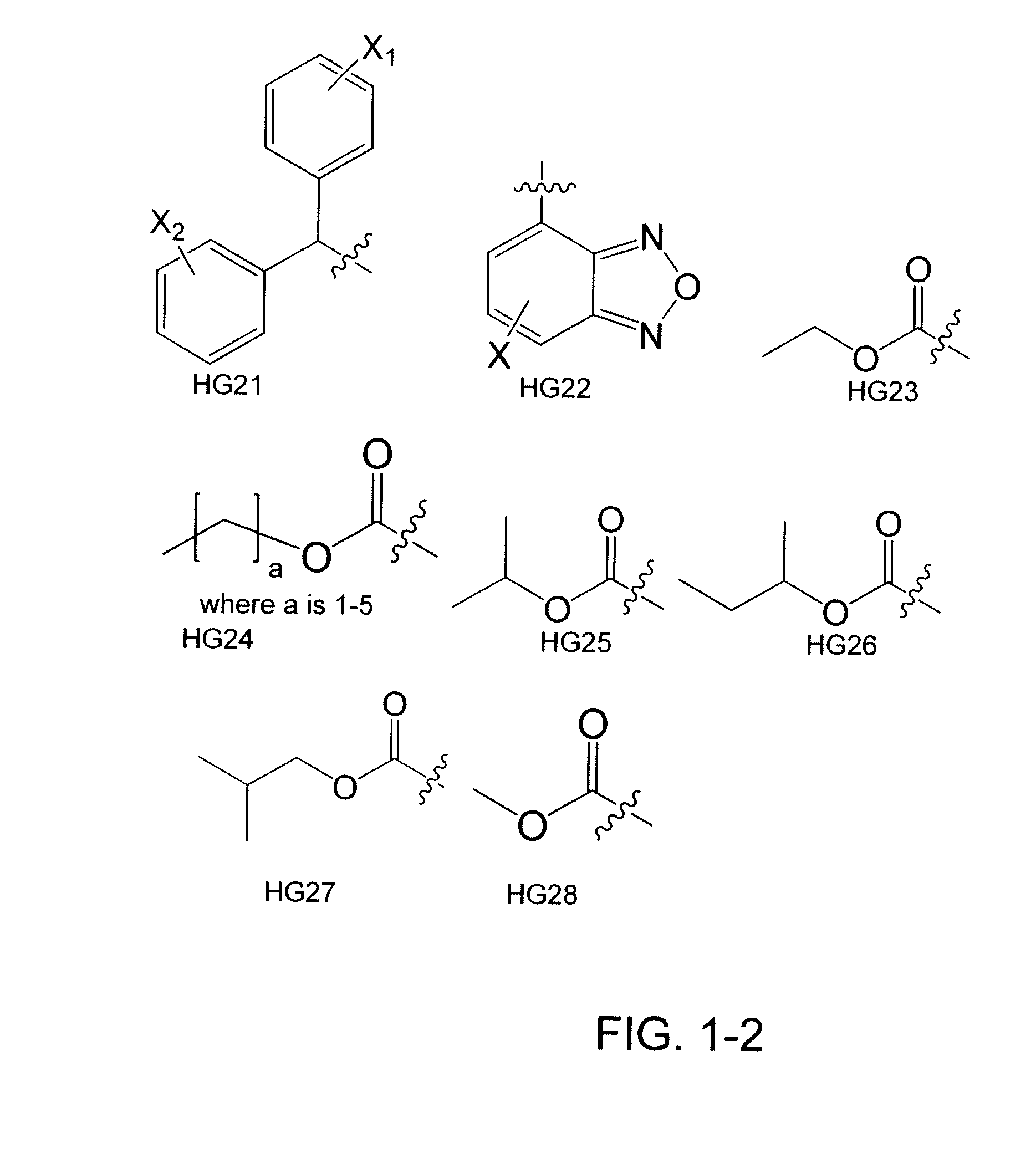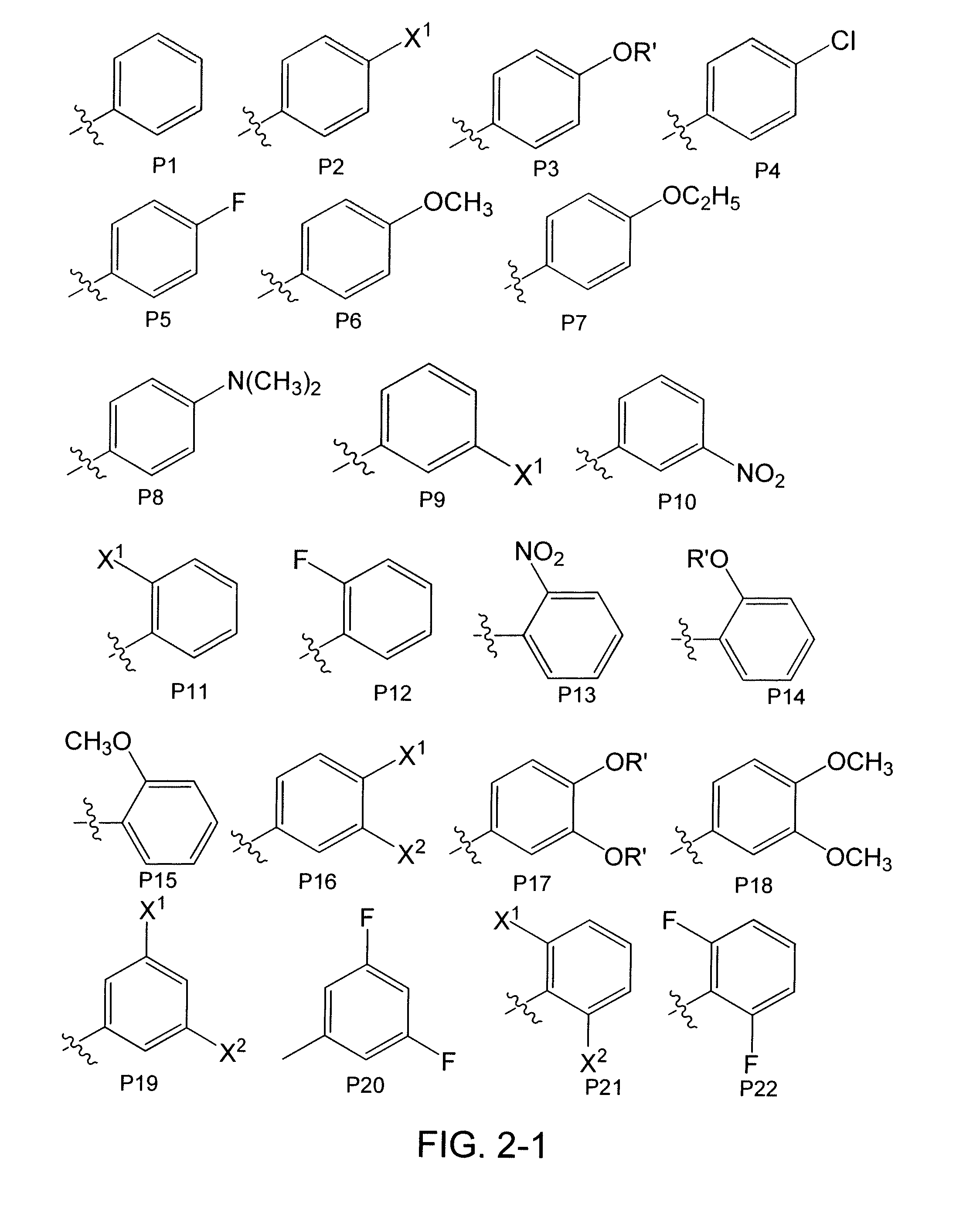Non-lactone carbocyclic and heterocyclic antagonists and agonists of bacterial quorum sensing
a quorum sensing and non-lactone technology, applied in the direction of antibacterial agents, biocide, fatty acid chemical modifications, etc., can solve the problems of limited success in modifying the ahl head group, affecting the symbiotic behavior of quorum sensing bacteria, and forming biofilms by p. aeruginosa /i>is eventually fatal, etc., to achieve the effect of enhancing the symbiotic behavior o
- Summary
- Abstract
- Description
- Claims
- Application Information
AI Technical Summary
Benefits of technology
Problems solved by technology
Method used
Image
Examples
example 1
[0177]Heterocycles and carbocycles were chosen as head groups for a library (FIG. 4) in order to probe the orientation and electronics necessary for a positive binding interaction with Trp60, shown to be an important residue in the N-terminal domain of the LasR crystal structure. Fluorine was chosen as a lactone carbonyl mimic due to its ability to accept hydrogen bonds. Multiple fluorine aromatic substitutions were examined to determine if Trp60 could hydrogen bond to multiple atoms given the correct spatial orientation. Non-hydrogen bonding oxygen-containing moieties were chosen to examine the effects of non-hydrogen bonding electrostatic interactions. The library also contained carbocycles to explore the necessity of the Trp60 binding interaction. A thiolactone analog shown to be active in previous experiments was chosen to serve as a control compound for our bacterial strains. [Passador, L.; Tucker, K. D.; Guertin, K. R.; Journet, M. P.; Kende, A. S.; Iglewski, B. H., Functional...
example 2
Focused Libraries—Racemic Thiolactone Library
[0186]Based upon the results of the initial library screen, focused libraries around the most active leads (1, 2, 3, 16 from FIG. 4) were developed. In these libraries, the identified head group remained identical while the 3-oxo-C12 acyl tail was replaced with mimics previously shown to be active in AHL libraries. [Geske, G. D.; O'Neill, J. C.; Miller, D. M.; Mattmann, M. E.; Blackwell, H. E., Modulation of Bacterial Quorum Sensing: Systematic Evaluation of N-Acylated Homoserine Lactones in Multiple Species and New Insights into Their Mechanism of Action. J. Am. Chem. Soc. 2007, 129, 13613-13625.]
[0187]The first focused library (FIG. 6) was a racemic homoserine thiolactone library, synthesized from 1-ethyl-3-(3-dimethyl aminopropyl) carbodiimide (EDC) couplings between homoserine thiolactone and the appropriate carboxylic acid (Scheme 2).
[0188]
[0189]Scheme 2 provides EDC coupling synthesis to make the racemic thiolactone library illustra...
example 3
Focused Libraries—Enantiopure Thiolactone Library
[0192]After finding several active compounds in the racemic thiolactone library in the heterologous E. coli LasI / R strain and the V. Fischeri strain, a third generation library was designed containing the enantiopure thiolactone along with additional acyl chain mimics to further explore the structure-activity relationship of the thiolactone head group (FIG. 8). The L enantiomer of the thiolactone was chosen based on previous studies that found the L enantiomer of P. aeruginosa's natural autoinducer to be active and the D enantiomer to be inactive. [Geske, G. D.; O'Neill, J. C.; Miller, D. M.; Mattmann, M. E.; Blackwell, H. E., Modulation of Bacterial Quorum Sensing: Systematic Evaluation of N-Acylated Homoserine Lactones in Multiple Species and New Insights into Their Mechanism of Action. J. Am. Chem. Soc. 2007, 129, 13613-13625; Glansdorp, F. G.; Thomas, G. L.; Lee, J. K.; Dutton, J. M.; Salmond, G. P. C.; Welch, M.; Spring, D. R., S...
PUM
| Property | Measurement | Unit |
|---|---|---|
| pH | aaaaa | aaaaa |
| pH | aaaaa | aaaaa |
| density | aaaaa | aaaaa |
Abstract
Description
Claims
Application Information
 Login to View More
Login to View More - R&D
- Intellectual Property
- Life Sciences
- Materials
- Tech Scout
- Unparalleled Data Quality
- Higher Quality Content
- 60% Fewer Hallucinations
Browse by: Latest US Patents, China's latest patents, Technical Efficacy Thesaurus, Application Domain, Technology Topic, Popular Technical Reports.
© 2025 PatSnap. All rights reserved.Legal|Privacy policy|Modern Slavery Act Transparency Statement|Sitemap|About US| Contact US: help@patsnap.com



